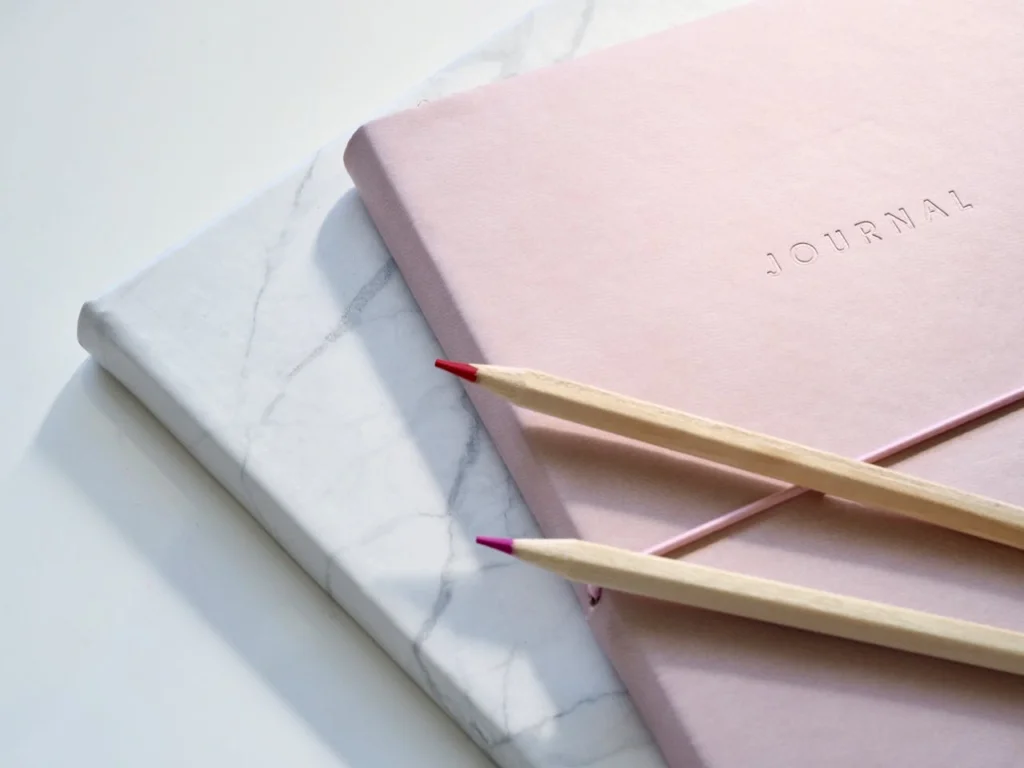
You’ve probably rolled your eyes at the word “gratitude” — I get it, it sounds like something from a cheesy self-help poster. But here’s the thing: neuroscience actually backs up what your grandmother always said about counting your blessings. When you consistently practice gratitude, you’re literally rewiring your brain’s neural pathways to notice positive experiences more readily. These thirteen simple techniques can transform your daily happiness without requiring major lifestyle changes, and some might surprise you with their effectiveness.
Morning Gratitude Journaling
While you might think you’re too busy to squeeze another habit into your morning routine—trust me, I’ve been there, frantically chugging coffee while hunting for matching socks—starting your day with just five minutes of gratitude journaling can actually transform how you experience everything that follows.
When you write down three specific things you’re grateful for each morning, you’re fundamentally rewiring your brain’s default mode. Research from UC Davis shows this straightforward practice increases life satisfaction by 25% within just ten weeks.
The key isn’t writing generic entries like “I’m grateful for my family”—instead, get specific: “I’m grateful my partner remembered I’d that big presentation and made my favorite breakfast.” This specificity creates what psychologists call “gratitude amplification,” turning routine appreciation into genuine emotional fuel that powers your entire day.
The Three Good Things Exercise
Just as morning gratitude sets a positive tone for your day, ending it by reflecting on what went well creates what researchers call a “gratitude sandwich”—bookending your waking hours with intentional appreciation.
The Three Good Things exercise is your secret weapon for rewiring your brain’s negativity bias, that annoying tendency we all have to focus on what’s wrong rather than what’s right.
Each night, write down three things that went well, no matter how small—maybe your coffee was perfectly brewed, a colleague complimented your work, or you didn’t hit every red light.
Then, fundamentally, explain why each good thing happened and your role in making it possible. This attribution component transforms passive gratitude into active empowerment.
Gratitude Meditation
When you combine the proven power of meditation with intentional gratitude, something remarkable happens in your brain—the prefrontal cortex, your brain’s CEO, literally strengthens its connection to areas responsible for emotional regulation and empathy. You’re fundamentally rewiring yourself for success and happiness simultaneously.
Start with just five minutes: sit comfortably, close your eyes, and breathe naturally. Instead of emptying your mind—which honestly feels impossible some days—fill it with appreciation. Focus on three specific things you’re grateful for, savoring each one like you’re tasting fine chocolate. Feel the warmth in your chest, the relaxation in your shoulders.
Research shows this practice increases activity in the hypothalamus, your stress-regulation center, while boosting dopamine production. You’re essentially training your brain to default to gratitude rather than worry.
Thank You Notes and Letters

Something magical happens when you put pen to paper—or fingers to keyboard, because let’s be honest, most of us haven’t handwritten anything longer than a grocery list in years—and craft a genuine thank you note that goes beyond the obligatory “thanks for the gift” your mom made you write as a kid.
Research from UC Berkeley shows that expressing gratitude through written communication strengthens neural pathways associated with positive emotions, fundamentally rewiring your brain for happiness. The key is specificity: instead of “thanks for everything,” try “your advice about handling difficult clients transformed how I approach workplace conflicts.” This targeted appreciation not only deepens relationships but positions you as someone who notices value—a powerful trait in any environment.
Gratitude Photo Challenge
Your phone’s camera, that device you probably use more for capturing questionable selfies and documenting your lunch than anything else, can actually become a powerful tool for rewiring your brain toward gratitude—and no, I’m not suggesting you Instagram your way to enlightenment with generic sunset photos.
The gratitude photo challenge transforms your daily visual routine into intentional appreciation practice. Research shows that actively seeking beauty and meaning through photography activates the same neural pathways as meditation, creating lasting positive mental shifts.
- Capture three gratitude moments daily: Morning coffee steam, your pet’s ridiculous sleeping position, unexpected kindness from strangers
- Focus on overlooked details: Textures, shadows, small gestures that usually escape notice
- Document feelings, not just images: Write brief captions explaining why each photo sparked gratitude
- Share selectively: Choose quality connections over quantity likes—vulnerability builds deeper relationships
Appreciation Walks in Nature

While your phone captures gratitude through pixels, your feet can open an even more profound appreciation practice—one that doesn’t require charging cables or worry about storage space. Appreciation walks transform ordinary strolls into gratitude goldmines, where you’re actively hunting for beauty rather than mindlessly stepping through your day.
Research from Stanford shows walking in nature reduces rumination by 45%, fundamentally quieting your brain’s complaint department. I’ve found my neighborhood looks completely different when I’m seeking wonder instead of mentally rehearsing tomorrow’s meetings. Even a ten-minute appreciation walk shifts your entire day’s momentum.
Here’s your power move: commit to noticing three specific things during each walk—the intricate bark patterns, morning dew catching sunlight, or that determined dandelion pushing through concrete.
Bedtime Gratitude Reflection
Most of us collapse into bed with our minds still spinning like hamsters on wheels—replaying awkward conversations, mentally drafting tomorrow’s emails, or pondering if we recollected to lock the front door.
This mental chaos steals your power to rest deeply and wake refreshed. Bedtime gratitude reflection transforms that swirling energy into intentional fuel for tomorrow’s success. Research shows gratitude practice before sleep improves sleep quality by 25% while boosting next-day motivation.
- Three wins from today — however small they seemed
- One person who supported you — even briefly
- A challenge that taught you something valuable
- Tomorrow’s biggest opportunity — frame it positively
You’re not just counting blessings; you’re programming your subconscious for resilience.
Gratitude Jar Collection
When life feels like it’s moving at warp speed—bills piling up, deadlines looming, that one coworker who somehow makes every meeting feel like a root canal—something as simple as a mason jar can become your secret weapon against overwhelm. You’re fundamentally creating a physical archive of good moments, and trust me, this isn’t your grandmother’s craft project.
Grab any container—mason jar, old coffee tin, that fancy vase collecting dust—and start dropping in gratitude notes. Write “Sarah brought me coffee without being asked” or “Found a parking spot right up front” on small slips. Research shows that writing gratitude by hand activates different neural pathways than typing, making the positive emotions stick better. You’ll be amazed how quickly those little victories add up.
Mindful Eating With Appreciation

Speaking of collecting moments worth savoring, your relationship with food offers three built-in opportunities every day to practice gratitude—and I’m not talking about those rushed protein bar breakfasts we’ve all survived on.
Mindful eating transforms ordinary meals into gratitude rituals that researchers call “savoring meditation.” Instead of scrolling through your phone while mechanically chewing, you’re training your brain to notice abundance in every bite.
Here’s how to turn meals into gratitude powerhouses:
- Pause before eating: Take three deep breaths and acknowledge everyone who brought this food to your table
- Engage all senses: Notice colors, textures, aromas—even that satisfying crunch of fresh lettuce
- Eat the first three bites slowly: Chew deliberately, focusing entirely on flavors and sensations
- Express silent thanks: Appreciate your body’s ability to nourish itself
Expressing Daily Gratitude to Others
While we’ve been focusing on internal gratitude practices, the real magic happens when you start expressing appreciation directly to the people around you—and yes, this includes that barista who somehow recollects your ridiculously complicated coffee order every Tuesday morning.
When you actively voice gratitude to others, you’re not just being polite; you’re triggering a psychological phenomenon called “gratitude reciprocity”—basically, appreciation creates appreciation. Research from UC Berkeley shows that people who receive specific acknowledgment (not generic “thanks”) experience measurable increases in well-being and are 31% more likely to help others.
Try this power move: tell one person daily exactly what they did that mattered to you. Watch how quickly your relationships strengthen and your influence grows.
Gratitude Affirmations and Self-Talk
You’re already spreading gratitude to everyone else—now it’s time to turn that same intentional appreciation inward, because let’s be honest, you’re probably your own harshest critic. Gratitude affirmations transform that negative self-talk into a powerful tool for confidence building.
These daily statements rewire your brain’s default patterns, creating what researchers call “positive cognitive loops”—basically, your thoughts start working for you instead of against you:
- “I appreciate my resilience through today’s challenges”
- “I’m grateful for my ability to learn and adapt”
- “I value my unique perspective and contributions”
- “I acknowledge my progress, even when it feels small”
Start each morning with three personalized affirmations—make them specific to your current goals and genuinely meaningful to you, not generic platitudes that feel hollow.
Creating a Gratitude Vision Board

Most people create vision boards focused on what they want to achieve, but here’s a twist that’ll supercharge your happiness levels: build one centered entirely on what you’re already grateful for. Your gratitude vision board becomes a visual reminder—think photos of loved ones, handwritten notes from friends, images representing your health, home, or favorite memories. Research shows visual cues trigger positive emotions faster than written lists alone, making this technique incredibly powerful for busy leaders like you.
I’ll admit, my first attempt looked like a kindergarten art project, but the daily impact was undeniable. Place it somewhere you’ll see regularly: your office wall, bathroom mirror, or phone wallpaper work perfectly for consistent gratitude reinforcement.
Weekly Gratitude Review Sessions
Beyond the daily visual reminders your gratitude board provides, setting aside time each week for deeper reflection amplifies these benefits exponentially—think of it as your personal happiness audit. You’re fundamentally/essentially/inherently conducting strategic reconnaissance on what’s working in your life, which puts you in the driver’s seat of your emotional well-being.
- Pattern Recognition: Identify recurring themes in your gratitude entries—these reveal your core values and natural sources of joy
- Gap Analysis: Notice areas where you’re struggling to find appreciation; these become your growth opportunities
- Emotional Tracking: Rate your overall mood throughout the week to correlate gratitude practices with actual happiness levels
- Goal Adjustment: Modify your gratitude focus based on what’s genuinely moving the needle for you
Conclusion
You’ve got thirteen powerful tools now—time to pick your favorites and start small. Maybe you’ll begin with morning journaling, or perhaps those thank-you notes feel more your speed. Don’t overwhelm yourself trying everything at once; even one practice, done consistently, rewires your brain for positivity. Recollect, gratitude isn’t about forcing fake happiness—it’s about training your attention to notice what’s already working. Your future, more content self will appreciate you.



Pingback: 14 Mindful Habits That Cost Nothing But Change Everything